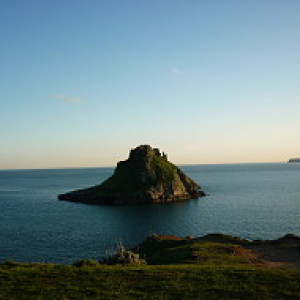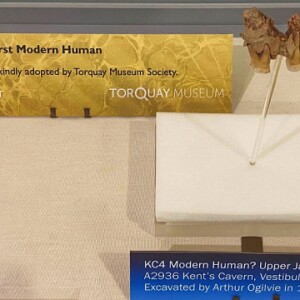An important tooth
The Torquay Museum Society have adopted a very important tooth. See extra
It is not perhaps as spectacular as those of Jurgen Klopp, or Taylor Swift, the most famous person in the world I know nothing about, but it is incredibly important allegedly. If we put it under the pillow it should bring in more than a pound from the Tooth fairy, because it is so important. The facts have been disputed of course.
In 1927, Arthur Ogilvie, Curator of Torquay Museum, excavated Kent’s Cavern. Ogilvie unearthed one of the most important finds to come from a British cave site, a fragment of human jawbone.
At the time, the jawbone was identified as that of a modern human by Britain’s leading anatomist Sir Arthur Keith. It would be another fifty years before modern dating techniques would reveal the true age of the jawbone and its significance for our understanding of Britain’s first modern humans.
In 2010 the fragment of human upper jawbone (above) from Kent’s Cavern was re-analysed. Newly developed dating techniques that were used on bones found around the jawbone revealed it could be more than 41,000 years old. High-resolution scanning of the teeth confirmed it to be that of a Homo sapiens. This makes the jawbone the oldest fossil of a modern human in North West Europe. It appeared that early modern humans had made it to Britain far earlier than previously thought.
In November 2015, The Museum started working on perhaps its most high-profile international research project with the Max Planck Institute. KC4 was sampled by staff from the Leipzig Institute at The Natural History Museum. The work was part of a research programme to try and understand more fully the relationship between Neanderthals and early modern humans in Europe. Very few specimens of modern humans exist across the whole of Europe and the Max Planck Institute for the Science of Human History had been successful in extracting aDNA from remains of both early modern humans and Neanderthals. Whilst the UK sits on the edge of all European hominin research and the material evidence from the British Isles is poor, in comparison to many European sites, the existence of KC4 and its potential to help us answer certain questions relating to the interbreeding of humans and Neanderthals continues to draw international interest. Successful results from this line of research could change forever how we view our relationship with Neanderthals and what it means to be human. As yet we have not managed to extract useful aDNA but this process is being refined all the time. #MuseumFromHome Kents Cavern Max Planck Society


Comments
Sign in or get an account to comment.


